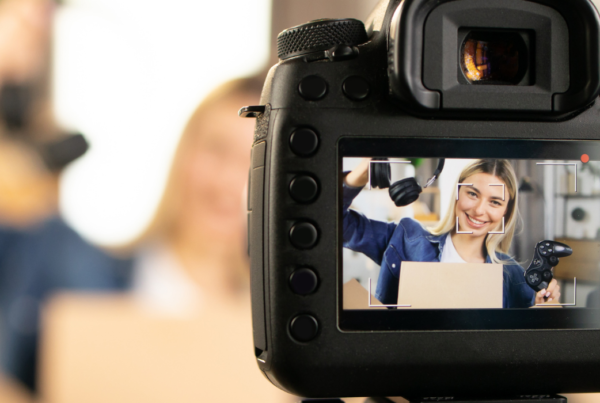Last Updated on 1 year ago by Ecem Ertürk
It is important to see how successful the marketing strategies you have prepared through social media platforms are. This success also shows you what you need to improve in your strategy. It is important to look at social media metrics to see how much you have achieved the goals you set when creating the social media strategy. Social media metrics consist of a series of data, and these data are highly reliable sources of specifying the effectiveness of the strategy. Each social media platform can contribute differently to your business. Analyzing the effects on your income stream is also important for your next strategies. These measurements can show you which subjects you are successful in and which you are in class. Social media agencies can create effective marketing strategies using these social media metrics. These agencies create a successful and growth-oriented strategy by looking at the size of your business, its power in social media, and important social media metrics, this option is quite advantageous for getting your brand name across and faster access to potential customers.
Why Should You Track Social Media Metrics?

If you don’t know where you are at the point of achieving your goals, you can’t see how far you have progressed. Social media metrics are ideal for seeing how much the strategy you implement benefits you, so they are metrics that should be followed by marketing agencies. In order for any strategy in the field of marketing to be successful, clear targets must be set first. How many of these clear goals are achieved is an important point and determines the course of your strategy. If you do not follow your goals, it means that you have adopted a blind strategy and success is completely coincidence. Instead, changing, improving, or supporting the strategy by following social media metrics is a much more advantageous option. When social media platforms are used correctly, it is a great opportunity for a business to grow and increase its profit margin. Taking more informed steps in your strategy here and analyzing concrete gains is one of the keys to success.
How to Track Social Media Metrics?
There are several different methods to track your campaigns on social media. The methods to be used may vary for each social media platform, but one of the most ideal methods is to examine the analytical part of the respective platform. While the analyses on some social media platforms are shown without any business or personal account, in some, they are shown only to business accounts, which creates a disadvantage. For example, LinkedIn and Facebook allow each profile type to access their own analysis, but Instagram and TikTok only show this analysis to their business accounts. According to the platform you use, if your business is not a professional account, you need to switch. This option is ideal for use as it is particularly budget-friendly. If your strategy is applied on multiple social media platforms, it is recommended to use one of the social media analysis tools to see all social media metrics. These platforms make it possible to track the data of multiple social media accounts from a single page. With the help of these analysis tools, you can filter, and see many metrics such as interaction and engagement at the same time.
Top Social Media Metrics to Track

There are some metrics among social media metrics that you need to pay attention to measure whether your strategy is successful. Social media metrics that must be followed are the ones that can also be interpreted together. It is possible to make meaningful changes by looking at the valuable metrics below.
1. Reach
Reach metric is a value that shows how many people you have created or how many people have reached. It allows you to see how many people the posts, stories, or short videos you have created have reached. In addition, it is important to how many people the profile where the grabbing is executed is displayed. It is a very successful metric in showing whether you have reached new users because it is possible to see what percentage of people reached in each post, not what percentage of followers. If the posts are already reaching people who don’t have followers, this indicates that the campaign is on the right track to reach the audience. For example, reach can be increased with cross-posting.
2. Engagement Rate
This social media metric shows how much users interact with the content you create. This interaction consists of likes, comments, and shares. The engagement rate is important because it shows how much the people you reach are interested in your brand and supports expanding the number of accesses. The high engagement rate is one of the goals to be achieved in an effective strategy because those who interact with the brand become more inclined users to buy. It is a value that can be interpreted by others among social media metrics. For example, it is important to look at the engagement rate with reach because 100 interactions at 10.000 reach rates indicate points that need improvement rather than success.
3. Impressions
Impressions show how many times users view your content. It appears as more than the reach rate because every time a user views a post, this information is stored and counted. For example, if your post reached 500 people but the impression value is 1500, this indicates that each user looks at the post on average 3 times. Remarkable content has a high impression rate, which creates an idea of the course of your strategy.
4. Audience Growth Rate
Audience growth rate shows you how fast your follower count has grown. This social media metric is important because it can directly show whether your strategy is successful. It is recommended to follow this metric regularly, especially if your goals are to increase social media followers. Each new incoming follower is included in this rate, but your current number of followers is also taken into account when calculating this rate. While it is quite useful to have 100 followers per month for a small account, new followers are expected to be more in larger accounts. If you have numerous high posts of engagement and reach but your new followers are few, you should review your strategy.
5. Video Views
When the subject is videos, each social media platform accepts different data on what to view. The most widely accepted data is a few seconds of viewing. So, if a user displays your video for a few seconds, this counts as meaningful data and is added to the metrics. If the number of reaches is high but the number of video views is low, you may need to make improvements to the content of the video, and your strategy.
6. Video completion rate
Although video views provide information about the course of your strategy, it does not give data to those who watch the video to the end. That’s why video completion rate is a better metric to look for because it is more useful to analyze data. With the help of this social media metric, it is possible to see the rate of viewing the videos you created until the end. Since there is important data, if there is a low completion rate, you should definitely make improvements.
7. Click-through rate (CTR)
Another way to track your interactions would be to look at the click-through rate. This social media metric shows how many people click the links you have added to guide users. It is important because users don’t click on the links of content that is not remarkable or curious.
8. Conversion rate
One of the most important measurements so far is the conversion rate. You can see the reflections of your strategy with this metric in the clearest way. It is possible to monitor the conversion with user behaviors such as receiving subscriptions, downloads, and sales. Social conversions directly support the growth of your business and are a meaningful social media metric to measure success.
9. Cost-per-click (CPC)
Cost-per-click is a way to track the paid ads you give to make your content stand out. If you have not reached the visitor traffic you have targeted and have not received any meaningful conversion, it is imperative to review your strategy if the cost per user is high. It is an important metric because after making a specific investment in a strategy, the strategy is expected to save that investment. Social media agencies work effectively to deliver paid ads with the right content and track metrics correctly. Relevant examples can be looked at to understand this metric. For example, when a post on Instagram is somehow highlighted, the cost per click is the amount paid to Instagram for each click. Content agencies also try to adopt low-cost but high-conversion strategies.












